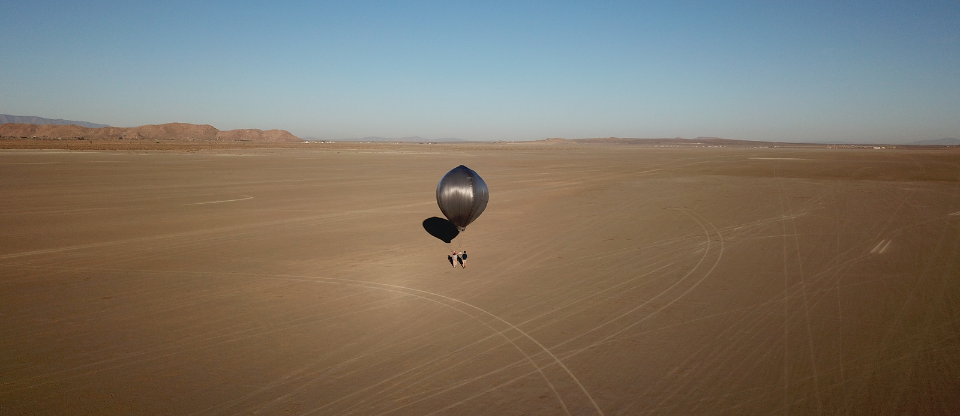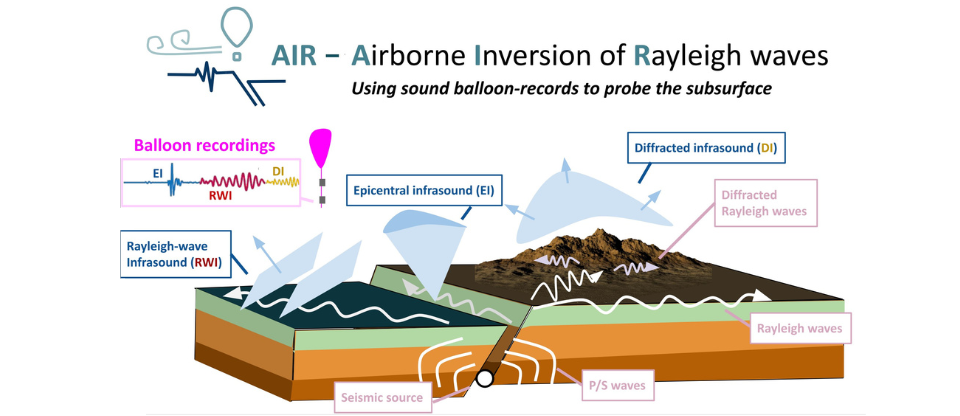Pushing boundaries to understand Venus' interior

The next three years, the researcher project AIR, will assess the feasibility of exploring Venus’ interior using Balloon-borne seismology.
The planetary science project "Airborne Inversion of Rayleigh waves", or AIR, will be led by NORSAR’s Quentin Brissaud and involve numerous renowned international institutes including the University of Oslo (UiO), Institutet för rymdfysik (IRF) in Sweden, Caltech and NASA in the USA.
AIR’s team will assess the viability of using sound waves generated by underground seismic activity to constrain the subsurface structures of terrestrial planets, especially Venus. AIR builds on recent research that has demonstrated that the sound signature of seismic waves, generated by seismic events, can be recorded from high-altitude balloons. This new field of research is called balloon-borne seismology and is considered to be one of the only ways to investigate Venus' interior where surface temperature and pressures are too harsh to use conventional techniques. However, there is a long away ahead before being able to fully exploit balloon-borne infrasound data efficiently and automatically. AIR will be a steppingstone in this field by significantly improve our understanding of planet-atmosphere couplings and build tools to prepare for future planetary missions.
The project is funded by the Research Council of Norway as a Young researcher project and will involve a post-doctoral researcher working at NORSAR as well as a PhD student from Caltech to develop new modelling and inversion techniques. In August 2023, we will advertise a 2-year post-doc position at NORSAR. Keep an eye out for the official vacancy announcement.
Balloon-borne seismology
On Earth, our understanding of its internal structure comes primarily from seismic waves collected by seismic instruments at the ground. However, the tremendous pressure and temperature conditions of Venus prevent any deployment at its surface. Therefore, the interior structure of Venus remains largely unknown due to lack of in situ observations.
Yet, the mechanical coupling between the ground and its atmosphere enables the seismic energy to be transmitted into the atmosphere as low-frequency acoustic waves carrying information about the seismic source and the subsurface properties.
While infrasound is traditionally recorded at ground-based stations, recent studies have demonstrated that balloon platforms can be used to monitor seismic activity from the atmosphere, and this for a low operational cost.

The Airborne Inversion of Rayleigh-waves project
AIR will build a better understanding of the impact of seismic events on the atmosphere by exploiting historical balloon pressure data collected by the Jet propulsion Laboratory (JPL) and the Swedish Institute of Space Physics (IRF) during large-scale balloon campaigns. Large-scale analyses and modelling of seismically induced infrasound signatures will allow AIR to build a direct link between source, subsurface properties, and sound signatures. The research will push the envelope of balloon technologies for the detection and analysis of natural and man-made events on Earth and beyond.
What is...
Infrasound?
Infrasound describes sound waves with frequencies below 20 Hz. Infrasound cannot be heard by the human ear but can travel over great distances and be recorded by microbarographs on the ground or at higher altitudes. Man-made sources of infrasound include nuclear explosions and other major explosions, rocket launches, and supersonic aircrafts. Natural phenomena that generate infrasound include volcanic eruptions, earthquakes, meteors, and storms.
Rayleigh waves?
Rayleigh waves are a type of surface wave that travel over large distances along the surface of solid material, here a planet's surface. These waves carry a lot of information about the type of material they propagate into and have been used to infer Earth's interior structures. Rayleigh waves are typically produced on the Earth by earthquakes, meteors, or volcanic eruptions.
